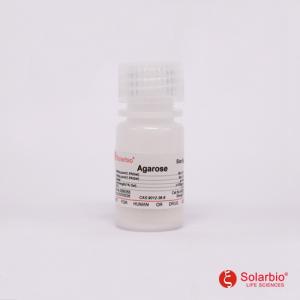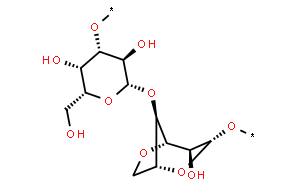CAS:9012-36-6
Storage:Store at RT,5 years.
Appearance:White powder

Agarose, abbreviated AG, is the neutral, uncharged component of AGAR and is also translated as agarose or agarose. The chemical structure of agarose is composed of β-D-galactopyranose (1-4) linked to 3, 6-dehydration alpha-L-galactopyranose units. Agarose, a polysaccharide AGAR that contains almost no sulfate, is dissolved in hot water and cooled to make a gel. The resulting small particles are used for gel filtration. It is suitable for the filtration of macromolecules that cannot be separated by sephadex. If the gel with a concentration below 5% is used, it can also separate cell particles, viruses, etc. Because of its low adsorbability, it is sometimes used instead of AGAR as a support for immunoelectrophoresis or gel deposition reactions.
Product function:
DNA, lipoprotein and immunoelectrophoresis; Substrate for biochemical studies such as immunodiffusion. Agarose is a linear polymer with a basic structure of 1, 3-linked β-D-galactofuran and 1, 4-linked 3, 6-anhydroα-L-galactofuran. AGAR pectin is a heterogeneous mixture of many smaller molecules. Agarose is generally heated to dissolve above 90 ° C in water, and a good semi-solid gel is formed when the temperature drops to 35-40 ° C, which is the main feature and basis for it to have a variety of uses. Agarose gel properties are usually an indicator of gel strength. The higher the strength, the better the gel performance.
Appearance: White or yellowish powder
Characteristics: Total impurities: ≤1.0% ash ≤10% moisture
Note: Product information may be upgraded. The actual label information prevails.
Note:Product information may be optimized and upgraded. Please refer to the actual label information for accuracy.

 English
English
 中文
中文



